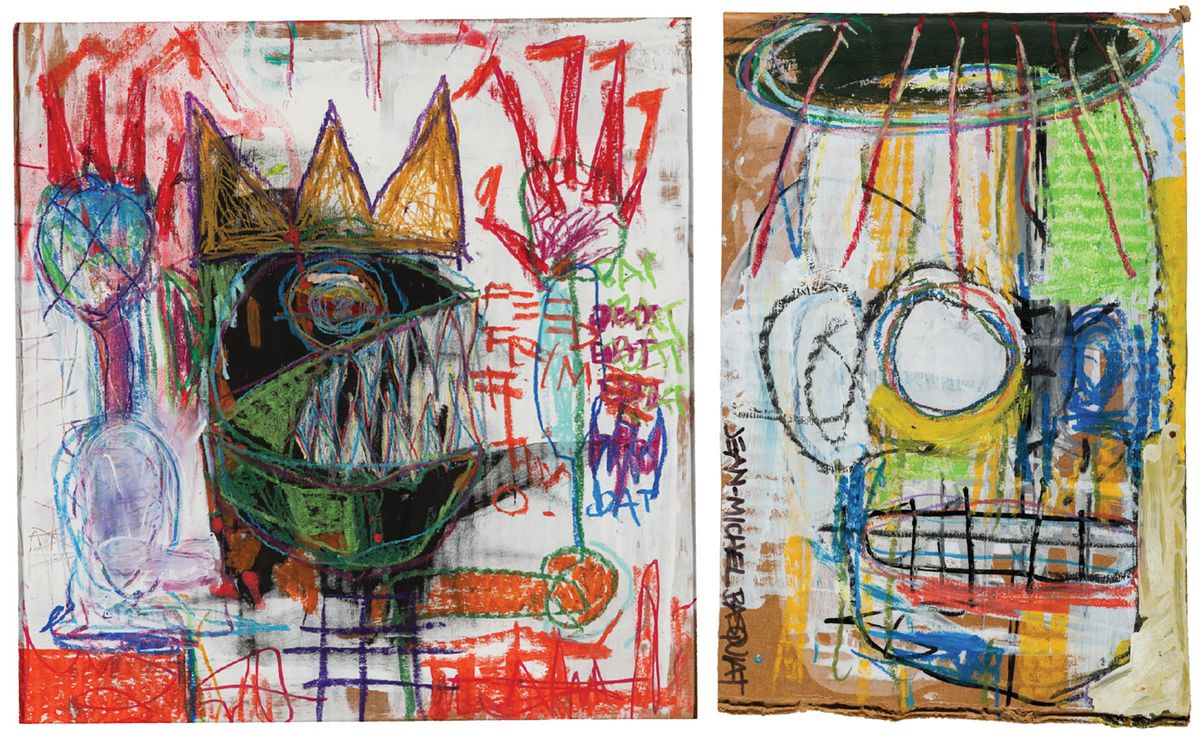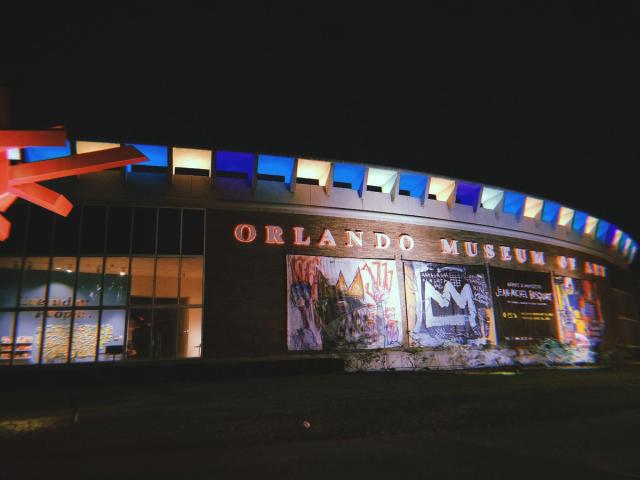The Orlando Museum of Art (OMA), which in June 2022 was raided by the FBI over an exhibition of pieces purportedly by Jean-Michel Basquiat, is suing its former director for allegedly seeking to profit off the works. On 14 August, the museum filed a lawsuit against Aaron De Groft, who was fired just days after the raid, in which federal agents seized all 25 paintings on view. The institution’s lawyers are seeking an unspecified sum in damages for fraud, conspiracy, breach of fiduciary duty and breach of contract, The New York Times reported.
De Groft is named in the lawsuit alongside five co-owners of the paintings, which were exhibited beginning February 2022 in the exhibition Heroes & Monsters: Jean-Michel Basquiat. Framed as “rare” paintings that Basquiat supposedly created in 1982 while living in California, they were said to be on public view for the first time, on loan from a private collection. The lawsuit alleges that De Groft sought to raise the value of the paintings by displaying them at the museum, and that its owners promised him a “significant cut of the proceeds” when they eventually sold.
“OMA spent hundreds of thousands of dollars—and unwittingly staked its reputation—on exhibiting the now-admittedly fake paintings,” the lawsuit says. “Consequently, cleaning up the aftermath created by the defendants has cost OMA even more.”
De Groft told the Times on 15 August that he had not yet been served the lawsuit, and he denied having any financial arrangements with the paintings’ owners. At least two of them, California lawyer Pierce O’Donnell and retired salesman Leo Mangan, maintain that the works are genuine Basquiats.
But in a plea agreement filed in April, Michael Barzman, who formerly ran an auction business reselling the contents of unpaid storage units, admitted that he and an accomplice had created the Basquiats in 2012. His partner, identified as “J.F.”. “spent a maximum of 30 minutes on each image and as little as five minutes on others, and then gave them to [Barzman] to sell on eBay”, according to the plea agreement.
The new lawsuit states that De Groft never saw the paintings before agreeing to mount the exhibition at OMA. He “was presented with one red flag after another”, the documents say, “warranting, at the very least, both reconsideration of the exhibition and disclosure to the OMA board at large”. The lawsuit also accuses the former director of dismissing museum employees’ concerns about the authenticity of the works.
Shortly after the exhibition opened, the provenance of the paintings was publicly questioned by the Times, which identified a FedEx logo on a cardboard box used as a support. A brand expert whom the newspaper consulted said that the company’s typeface in that logo dates to after the artist’s death.
According to court documents, in a July 2021 email to Richard LiPuma (Mangan’s lawyer), De Groft said that the works had “iron clad provenance”. “You all are sitting on platinum encrusted with diamonds,” he wrote. “I stake my reputation on it ... There are many fingerprints on the works that I believe undoubtedly to be JMB.”
OMA’s lawsuit additionally alleges that De Groft attempted to use the museum as a means to legitimise works by Titian and Jackson Pollock. The Pollock—co-owned by O’Donnell and not authenticated by the artist’s estate—was set to be the centrepiece of an exhibition scheduled to open in January 2022 but later cancelled.
An email sent that year from De Groft to the owner of the Titian, published by the Times, reads: “Let me sell these Basquiats and Pollock and then Titian is up next with a track record. Then I will retire with mazeratis [sic] and Ferraris.”
The fallout from the revelations about the purported Basquiats was swift: while OMA cancelled two other exhibitions planned by De Groft, of works by Micheangelo and Banksy, patrons of the institution quickly began moving not only funds, but also loaned collections, elsewhere. Earlier this year, the American Alliance of Museums put OMA on probation, threatening its accreditation.
In a statement to The Art Newspaper, the museum's board chair, Mark Elliott, wrote, in part: “Given that litigation has commenced, the OMA looks forward to presenting its case to a jury.”



